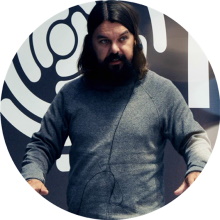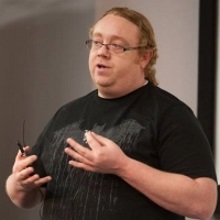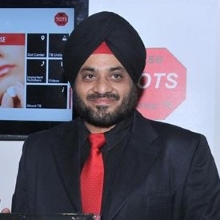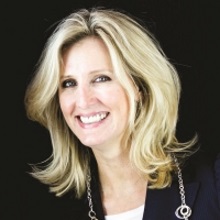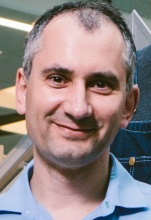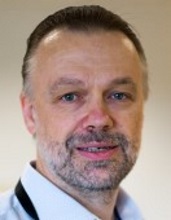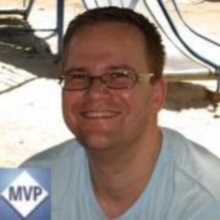
@maartenballiauw
https://blog.maartenballiauw.be/ |
Maarten Balliauw - Developer Advocate at JetBrains
Maarten Balliauw loves building web and cloud apps. His main interests are in .NET web technologies, C#, Microsoft Azure and application performance. He is Developer Advocate at JetBrains, and formerly founded MyGet. He’s an ASP Insider and former Microsoft MVP. Maarten is a frequent speaker at various national and international events and organizes Azure User Group events in Belgium. In his free time, he brews his own beer.
Session: Indexing and searching NuGet.org with Azure Functions and Search
Which NuGet package was that type in again? In this session, let's build a "reverse package search" that helps finding the correct NuGet package based on a public type name. Together, we will create a highly-scalable serverless search engine using Azure Functions and Azure Search that performs 3 tasks: listening for new packages on NuGet.org (using a custom binding), indexing packages in a distributed way, and exposing an API that accepts queries and gives our clients the best result. Expect code, insights into the service design process, and more!
|
|

@markjbrown
https://gotcosmos.com/ |
Mark Brown - Principal Program Manager
Mark is an 18 year Microsoft veteran and has worked on a number of products and services including, Windows Mobile, Bing Maps, Web Platform & Tools and Azure where he worked on Web Apps Service, Redis Cache, Networking and now Cosmos DB. Prior to Microsoft, Mark worked for a number of early e-commerce and dot-com startups building distributed systems. Mark is passionate about web development, distributed cloud computing and database and growing the developer community around Azure and Cosmos DB.
Session: How to build mission critical, globally distributed applications with Azure Cosmos DB
Developing highly-available, globally distributed applications in the cloud that respond with extreme low latency while maintaining consistent views of data worldwide is a challenging problem. In this session, we explore the PACELC theorem and demonstrate the relationship between availability, latency and consistency in a distributed environment to understand the tradeoffs that must be made when architecting distributed systems and databases. This session will help you understand how to design for high-availability in Azure, and how to translate RPO and RTO to drive the design choices that must be made when building global applications in the cloud. If you build distributed applications for the cloud or advise customers how to do it, this session is for you. Packed with real-world scenarios and demos that you can take and use yourself.
|
|

@johed
https://jeh.se/blog/ |
Johan Hedberg - Consultant, Developer and Architect
Johan is a full stack developer with a back-end focus who thrives best in an agile team working with the Microsoft platform. He can also do design and architecture, talk to C-level execs, do presentations, hold a workshop, produce and conduct training, run a project or an agile team, work independently, juggle tasks, keep his calm under pressure and more. Some people call that an architect.
Session: Analyze and gain insights into your time series data
If you've got time series data - a sequence of events in time such as stock prices, meter readings, IoT device data, wind speeds, speedometer data, sales data, or virtually anything that represents time based events - you likely have some challenges: How do I design a data ingestion pipeline that meets my needs? How do I manage and store the data in a performant, open and accessible way? How do I query, analyze and gain insight into the meaning and importance of that data? Azure Time Series Insights helps you with these three and in this session I will show you how it can be used, how you can get started, how to tie it together with other Azure services and how it can help you solve you time series data challenges.
|
|

@rikhepworth
http://blogs.blackmarble.co.uk/blogs/rhepworth |
Rik Hepworth - Azure MVP & and IT Director at Black Marble
Rik is a Microsoft MVP for Azure and IT Director at Black Marble, a Gold partner in the north of England. His role includes delivering robust IT solutions to both his own organisation and its customers, which can take in a broad spectrum of technologies. An enthusiastic technology evangelist, Rik is a regular presenter at events around Europe. Cloudburst will be his first trip to Sweden, and he’s looking forward to it!
Session: Governance: The forgotten key to managing Cloud
We all want to use Cloud in our projects, and every customer I talk to has developers that want to pioneer their company's adoption of the latest and coolest stuff. But for every success story there is a painful admission: Crazy costs from unconstrained adoption; sensitive data suddenly stored somewhere it shouldn't be; technology gone wild as every project tries something new. The solution is governance, and making sure you, the developers and IT Pros who are advocating cloud in you organisations understand the management needed for successful adoption is key: When you convince your team to move to Azure you can get extra credit for helping your organisation move to the cloud without the pain. Whilst governance does not need tooling per se, Microsoft has a range of great tools in the Azure arsenal to help you.In this session I'll talk about the kinds of things that can go wrong, the simple things you can do to avoid them, and I'll show you the Azure tooling, some of it brand new, that will help you.
Session: Getting started with Azure Blueprints
This session will show you how to create and use Blueprints across your organisation with demonstrations of what Blueprints can do to bring consistent management to your Azure subscriptions and reduce business risk through doing so. Governance is a critical part of cloud success, and Azure has a range of tools that can be used to enforce how your services are deployed and managed. Using those tools in a consistent manner across a large estate of many subscriptions can be hard. Azure Blueprints gives you a way to templatise and standardise things like RBAC assignments and policies across many subscriptions.
|
|

@iamalexmang
https://www.alexmang.com/ |
Alex Mang - Microsoft RD, Azure MVP
Alex Mang is a Microsoft Regional Director and Azure Most Valuable Professional, working as a cloud architect, consultant, trainer, software developer but also regularly seen at conferences and user groups speaking mostly on cloud-computing topics. His main goal is to help developers better understand the implications of cloud-computing as a whole, from as many perspectives as possible. Alex was invited three times in a row as a featured speaker at Microsoft Ignite, the company’s largest and most important technical conference gathering nearly 35,000 attendees. Since 2011, Alex runs KeyTicket Solutions, a company focused on democratizing access control, ticketing and management solutions for every single vertical in the world. For his experience on cloud - driven solutions, his Microsoft Certified Trainer, Microsoft Certified Solution Developer(MCSD), Microsoft Certified Solution Associate(MCSA) and Microsoft Certified Solutions Expert(MCSE) stand as proof and so do the many happy customers he had the pleasure to work with for the past many years.
Session: The Memoires Of A Windows Developer's Journey Towards Highly Scalable K8S Apps
Unless you've lived under a rock, you've heard the world talk about containers and specifically Docker and Kubernetes. And to some degree, you wanted to join the herd the people talking about these technologies, but felt overwhelmed with the new lexicon and awkward things which seemingly you have to learn.
By itself, Kubernetes is not necessarily a developer-friendly platform. Building, deploying, and testing microservice-oriented applications involves a lot of manual work and copious amounts of YAML.
Thankfully, Azure has the tools you need and makes Kubernetes approachable and productive for developers.But before using these powerful tools, you need to know how to harness them.
In this session, we’ll cover how to design and build microservice applications that can run on the Azure Kubernetes Service, including how to navigate from an app to a container to a Helm package and how to deploy into Kubernetes in a continuous way using Azure DevOps. We’ll also cover how you can use Azure Dev Spaces to develop an app that includes a couple of microservices to one which includes dozens or hundreds.
|
|

@noopman
http://loftysoft.com/ |
Magnus Mårtensson - Regional Director, Azure MVP and founder/CEO of Loftysoft AB
Magnus Mårtensson runs the company Loftysoft as a strategic consultant adviser, tutor, international speaker, process coach and technical lead. He is a Microsoft Regional Director and a Microsoft Azure Most Valuable Professional. In business as well as in life he is a true entertainer while being productive, smiles while being challenged and always gives more than is gained. He is man with a true consultant spirit and aims not to take life too seriously because he claims it’s more fun that way! Some of his passions are reaching out and connecting with audiences, engaging in community activities and organizing online and global conferences such as GlobalAzure Bootcamp and CloudBurst. Magnus focus on all things Cloudy and operates like a fighter pilot navigating cloudy skies helping clients safely harness the power and benefits the Clouds can bring. As the first Azure MVP in Scandinavia in 2012 he has been awarded MVP of the year and is now a go-to person for Microsoft in the Nordic countries regarding Enterprise Cloud Consulting. He is also a Microsoft Azure Insider and Microsoft Azure Advisor providing feedback even before early Microsoft releases to the Cloud Platform.
Session: Practical design patterns in the age of the Cloud
So many are thinking about, currently moving to, or are already in the cloud. Moving my old stuff from here to there is not all that difficult. Running a cloud-based workload, unlocking the true power of the platform, taking full advantage, saving money and creating applications that reach the globe is a little more challenging. Let's talk about the software design patterns that make sense in the age of the cloud, and let's ask the critical question - when to use which?
|
|

@fincooper
https://zure.com/ |
Karl Ots - Chief Consulting Officer & Azure MVP at Zure
Karl Ots is a cloud and cybersecurity consultant, as well as international speaker and trainer, with a broad range of deep Azure expertise. He believes that cloud technologies are the key to successful digital transformation. He applies his passion and expertise to his work as Chief Consulting Officer at Zure, the Azure-only consultancy. Karl is also an Azure MVP.<br>With professional experience in technology field since 2007, Karl has been working with Microsoft Azure since 2011 in a variety of forums ranging from deep customer engagements to speaking at largest tech conferences, such as Microsoft Ignite. Karl is a Microsoft Certified Trainer (MCT) and a Certified Information Systems Security Professional (CISSP).
Session: Best practices of securing web applications running on Azure Kubernetes Service
The multitude of security controls and guidelines for both Kubernetes and Azure can be overwhelming. Based on real-life experiences from securing web applications running on Azure Kubernetes Service, Karl has compiled a list of best practices that bring these worlds together.
In this session, you will learn how to build, operate and develop secure web applications on top of Azure Kubernetes Service. After this session, you will know which security controls are available, how effective they are and what will be the cost of implementing them.
|
|

@adiPolak
https://aka.ms/start-with-the-cloud |
Adi Polak - Cloud Developer Advocate – Microsoft
Adi is an experienced Software Developer. You will often find her writing code, investigating software engineering problems, writing posts, speaking at conferences, and working with tech. Adi has an extensive experience in machine learning, high scale data systems, security, and JVM-based languages, including Java, Scala, and Kotlin.
Session: From desktop to the web with the cloud - cutting costs with Virtual Kublet and ACI
By running your workloads in Azure Container Instances (ACI), you can focus on designing and building your applications instead of managing the infrastructure that runs them.But wait! what about the cost?? When running containers in ACI, you are charged by the second for each running container.However, with the Virtual Kubelet provider for Azure Container Instances, both Linux and Windows containers can be scheduled on a container instance as if it is a standard Kubernetes node. This configuration allows you to take advantage of both the capabilities of Kubernetes and the management value and cost benefit of container instances.In this talk you will learn how to re: write JVM desktop app to a Web app and deploy them to ACI with Virtual Kublet for managing costs leveraging simplicity of ACI, scalability of Kubernetes and cost efficiency using Virtual kublet.
|
|

@SvenRuppert |
Sven Ruppert - Developer Advocate
Sven Ruppert has been coding Java since 1996 working as Developer Advocate for Vaadin and Oracle Developer Champion. He is regularly speaking at Conferences like Oracle Code/JavaOne/Jfokus/Devoxx/JavaZone/JavaLand and many more and contributes to IT periodicals, as well as tech portals.
Session: From desktop to the web with the cloud - cutting costs with Virtual Kublet and ACI
By running your workloads in Azure Container Instances (ACI), you can focus on designing and building your applications instead of managing the infrastructure that runs them.But wait! what about the cost?? When running containers in ACI, you are charged by the second for each running container.However, with the Virtual Kubelet provider for Azure Container Instances, both Linux and Windows containers can be scheduled on a container instance as if it is a standard Kubernetes node. This configuration allows you to take advantage of both the capabilities of Kubernetes and the management value and cost benefit of container instances.In this talk you will learn how to re: write JVM desktop app to a Web app and deploy them to ACI with Virtual Kublet for managing costs leveraging simplicity of ACI, scalability of Kubernetes and cost efficiency using Virtual kublet.
|
|

@alansmith
http://geekswithblogs.net/asmith |
Alan Smith - Azure MVP
Alan is from England and resident in Stockholm where he works as a consultant for Active Solution, a company specializing in Microsoft Azure and .NET development. He has been in the IT industry since 1995 and delivering training courses since 2005. Between courses he acts as a mentor and coach to other developers and teams, sharing his knowledge of Microsoft Azure to improve their project development. He also works closely with Microsoft, taking part in technology preview programs, attending software design reviews and providing feedback to development teams. Alan has an active role in the developer community running a local Microsoft Azure user group as well as playing a leading role in organizing the Global Microsoft Azure Bootcamp and the CloudBurst conference in Sweden. He is a frequent presenter at conferences and user groups in Sweden and around Europe and has held the Microsoft MVP award for nine years, currently as an MVP for Microsoft Azure.
Session: Azure Custom Vision for Developers
The Azure Custom Vision service enables users to easily train convolutional neural networks (CNNs) for classification and object detection. These trained models can then be leveraged by custom vision applications as could-hosted services. The custom vision service also supports the exporting of trained models, allowing them to be used on-premise and on mobile devices for near-real time vision applications.
In this developer focused session Alan will start with the basics of neural networks and explain how they can be trained to clarify images. He will them move on to more complex convolutional neural networks (CNNs) and explain the details of object detection. TensorFlow and Keras will be used to demonstrate the training of basic image classification networks on-premise.
The use of the Azure Custom Vision service to train CNNs will be demonstrated using both classification and object detection examples with tips on techniques for training the networks effectively.The use of these trained networks will be demonstrated by calling the cloud - hosted services, as will as using and exported network model in an on-premise application for real - time object detection using a video stream.
|
|

@SteefJan |
Steef-Jan Wiggers - Azure Technology Consultant Codit
Steef-Jan is an Azure Technology Consultant for Codit in the Netherlands. He has over 20 years’ experience in a wide variety of scenarios such as custom .NET solution development, overseeing large enterprise integrations, designing and building API's and cloud solutions, managing projects, experimenting with data, mentoring, teaching and consulting. Steef-Jan loves challenges in the Microsoft playing field combining it with his domain knowledge in energy, utility, insurance, healthcare, agriculture, (local) government, bio-sciences, retail, travel, and logistics. He is very active in the community as a blogger, book author, InfoQ editor, and global public speaker. For these efforts, Microsoft has recognized him as a Microsoft MVP for the past nine years.
Session: The way of the exploding workflow – Become an Expert in an hour
“Do you want to be an awesome low-code developer?” You will become the expert, like a karateka reaching the 10th Dan after this session. Over the years you as a developer might have faced many versions of workflow like K2, SharePoint, or Windows Workflow Foundation (WF). Furthermore, you might look for one in the cloud. Well, there’s some good news - the latest addition to the workflow in Azure is Logic Apps, a mature service enabling you to build business flows using a low-code approach. However, low-code you can still leverage your developer skills by integrating with Functions, leverage expressions, use inline code, fiddle around in the code-behind file of a workflow definition, and build ARM templates. Moreover, before you know it, you will many of them - performing all kinds of tasks, and integrations to support your business processes. In this session, we will go on a journey in my dojo to reach the 10th DAN using the analogy of the epic Commodore 64 game “the way of the exploding fist”!
|
|
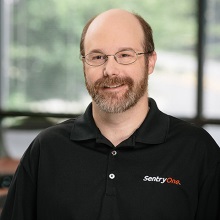
@mikewo |
Mike Wood - Lead Cloud Engineer
Mike builds and maintains cloud based products for a database performance company called SentryOne. He’s been obsessed with cloud computing since 2008, which has led to being awarded a Microsoft MVP in Azure each year since 2010, and the humbling opportunity to speak at conferences like this.
Session: A Tour of Azure Monitor
If an application throws exceptions and no logger is around to hear it, are you really violating your SLA? Sadly, in the rush to move to the cloud sometimes the decisions are mostly about how to get an application to live there, how to migrate existing servers, or, let's face it, what JavaScript framework to use. Only once the change is well underway does someone finally asks the question, "so, why is my app crashing?", or "what do you mean by logging ?". Azure Monitor provides a wealth of services and information about your resources without having to do much more than toggle some switches, even if the developers didn't think to include logging. Come learn about which switches you can toggle, but more importantly, about how to really leverage the wealth of data the Azure Platform can gather for you to truly support your systems.
|
|


